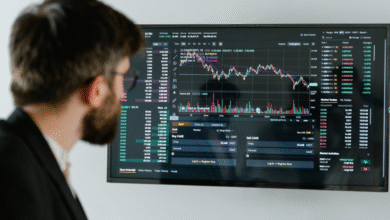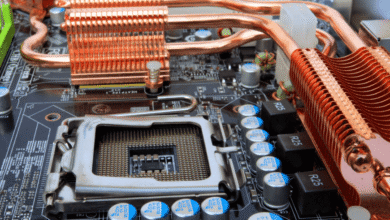
In today’s world, smart cameras seem to be everywhere. It’s like they’ve quietly taken over, becoming an integral part of our daily lives without us even noticing. From the security cameras perched on street corners to the ones tucked away in our doorbells, they’re omnipresent. These aren’t just regular cameras either; they’re intelligent, capable of doing much more than just recording footage. They can analyze, interpret, and even make decisions based on what they see.
One of the most revolutionary aspects of these cameras is facial recognition technology. This isn’t just some sci-fi concept anymore; it’s real and happening now. Airports use it to streamline passenger check-ins, while law enforcement agencies employ it to identify suspects quickly. The sheer convenience it offers is undeniable, but there’s also a flip side. Concerns about privacy and the potential for misuse are very real. It’s a double-edged sword that society is still learning to balance.
Beyond security, smart cameras with facial recognition are also making waves in retail. Imagine walking into a store and having personalized recommendations pop up based on your previous visits. It’s both fascinating and a tad bit creepy, right? But that’s the world we’re heading towards – one where our faces become our identities in more ways than one.
Drones take security to the next level
Drones aren’t just for hobbyists or delivering packages anymore. They’ve become a crucial part of modern security systems. Flying high above, they offer a bird’s eye view that’s unmatched by any stationary camera. Whether it’s patrolling large areas or reaching places that are otherwise inaccessible, drones are proving to be invaluable.
Think about large-scale events like concerts or sports games. The sheer number of people makes it nearly impossible to monitor everything from the ground. In such scenarios, a Full body scanner can be an excellent complementary tool for ensuring security, as it provides detailed scans that drones might miss. Enter drones, which can effortlessly scan the entire area, ensuring safety and security from above. They can also be equipped with thermal imaging cameras, making them perfect for nighttime surveillance or search and rescue operations.
But it’s not just about watching from above. Drones can also respond quickly to incidents, providing real-time footage to security personnel on the ground. This rapid response capability can be crucial in preventing potential threats or addressing emergencies swiftly. It’s like having an ever-watchful eye in the sky, ready to act at a moment’s notice.
Ai is the new security guard
Artificial Intelligence (AI) is rapidly transforming the security landscape. Gone are the days when security relied solely on human vigilance. Now, AI algorithms can analyze vast amounts of data in real-time, identifying potential threats faster and more accurately than ever before. Imagine a scenario where an AI system analyzes video feeds from multiple cameras simultaneously. It can detect unusual behavior patterns – like someone loitering in a restricted area or leaving a suspicious package – and alert security personnel instantly. This kind of proactive threat detection is something that human guards alone could never achieve.
Moreover, AI isn’t just limited to video analysis. It’s also being used in cybersecurity to detect anomalies in network traffic, thwarting cyber-attacks before they cause significant damage. The ability of AI to learn and adapt means that it becomes more effective over time, constantly evolving to counter new threats.
Read Also: Emerging Tech_Indian Economy_Growth
Biometrics mean more than just fingerprints
When people think of biometrics, fingerprints often come to mind first. But modern biometric systems go far beyond that. Today, iris scans, voice recognition, and even vein pattern analysis are becoming standard methods of identification.
Iris scans, for instance, offer an incredibly high level of accuracy because no two irises are alike. This technology is already being used in airports for seamless passenger verification, speeding up the boarding process significantly. Similarly, voice recognition systems are becoming more sophisticated, capable of recognizing individuals based on unique vocal patterns.
Then there’s vein pattern analysis – a method that maps the unique pattern of veins beneath the skin’s surface using near-infrared light. This type of biometric authentication is highly secure because it’s virtually impossible to replicate someone’s vein pattern without their cooperation.
Integrating iot for seamless security
The Internet of Things (IoT) has revolutionized many aspects of our lives, and security is no exception. By connecting various devices – from cameras and sensors to alarms and locks – IoT creates an integrated security ecosystem that’s greater than the sum of its parts.
Think about smart homes where all security devices communicate with each other seamlessly. If an intruder breaches a window sensor, it can trigger cameras to start recording while simultaneously alerting homeowners via their smartphones. The interconnected nature of IoT ensures that every component works together harmoniously, providing comprehensive protection.
This integration extends beyond homes to commercial buildings and public spaces as well. Smart cities are leveraging IoT for enhanced surveillance and quicker emergency response times. The ability to monitor and control multiple aspects of security remotely gives authorities unprecedented control and flexibility in maintaining safety.
In conclusion, the advancements in security technology are nothing short of remarkable. From smart cameras and drones to AI and biometrics, each innovation brings us closer to a safer world. Companies like InsTech are at the forefront of these innovations, providing cutting-edge solutions that enhance security and safety. Integrating these technologies through IoT further amplifies their effectiveness, creating a robust security infrastructure that’s well-equipped to handle modern challenges.




